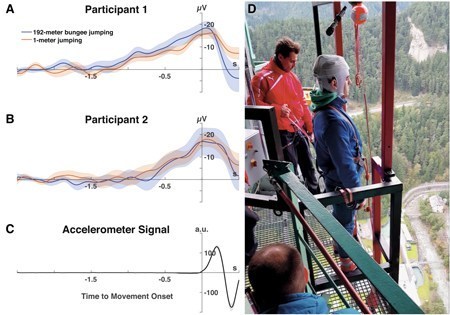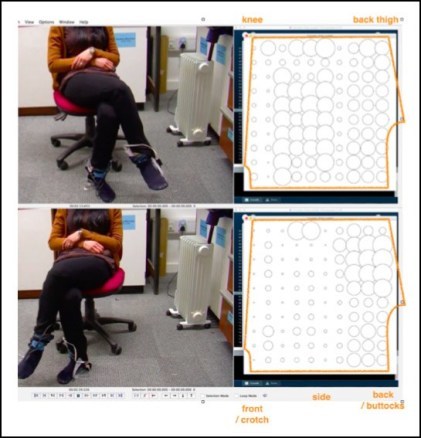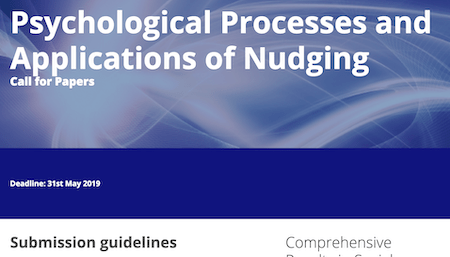Marc Abrahams's Blog, page 155
March 9, 2019
Ig Nobel today in St. Andrews, Scotland
The 2019 Ig Nobel EuroTour begins today:
March 9, Saturday, 1:00 pm—Science Discovery Day, University of St. Andrews, Scotland, in the Physics and Astronomy Building, the North Haugh
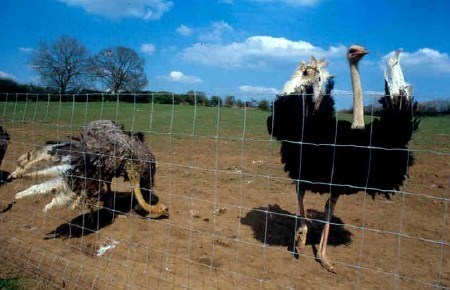
Today’s event features Marc Abrahams , with
Ig Nobel Prize winner Charles Paxton (Courtship behaviour of ostriches towards humans under farming conditions in Britain)
Scottish premiere performance of the chorus-enhanced version of William Topaz McGonagall ‘s disastrous poem “The Tay Bridge Disaster”

If you are in the neighborhood, please join us!
After today, the tour moves on to a prison visit, then to Manchester, then London, then to nine countries on the continent proper. (For details, see the tour schedule).

March 8, 2019
What happens when one divides by zero on this mechanical calculator
Mathematics students learn (unless they are not really students) why people should not try to divide by zero. In this video, CuriousMarc tries to divide by zero on a big, old mechanical calculator:

(Thanks to Mason Porter for bringing this to our attention.)
In this video, Khan Academy explains, for those who don’t know or have forgotton or who just want to watch another video, why people should not try to divide by zero:

March 7, 2019
The function of evil laughter in popular culture (new study)
One of the very few (perhaps the only) peer-reviewed scholarly studies devoted to investigating the function of evil laughter in popular culture has been recently been penned by Jens Kjeldgaard-Christiansen, who is a doctoral researcher at the School of Communication and Culture, Department of English of Aarhus University, Denmark.
In his new paper for The Journal of Popular Culture, he points out that :
“Evil laughter [thus] functions as an inferential lubricant, the use or nonuse of which is best understood from within the informational economy of individual fictions.”
And concludes :
“At a diegetic level, villains laugh because they are evil; at a tonal or metafictional level, to signal that they are evil. Evil laughter communicates both these things because it signals the perversely inverted gratification that villains derive from pondering or performing villainy.”
See: Social Signals and Antisocial Essences: The Function of Evil Laughter in Popular Culture in The Journal of Popular Culture, Volume 51, Issue 5, October 2018.

March 6, 2019
An animated look at the 2018 Ig Nobel Prize winners
March 5, 2019
Dr. Nudge
Did Dr. Nudge often nudge?
You will have to decide for yourself whether Dr. Nudge nudged often or seldom or not at all. Perhaps begin by looking up some of Dr. Nudge’s works.
Start, if you like, with the study “Flowering of Dichondra in response to temperature and daylength,” V.B. Youngner, F.J. Nudge, and S. Spaulding, American Journal of Botany, vol. 55, no. 7 (1968): 762-766.
BONUS: A nudge about nudging about nudging

March 4, 2019
“Dumbness” as a musically authentic asset (new study)
Hector Qirko is not only Associate Professor of Anthropology and Associate Department Chair at the College of Charleston, US – he’s also, as can be appreciated above, a recording artist.
As such, he’s noticed that when it comes to popular music, “dumbness” in performances can sometimes be regarded as a musically authentic asset.
“I once overheard a session producer compliment a musician for his ‘dumb’ contribution to a recording. Another time, I heard an engineer, listening to a track in preparation for mixing, praise the ‘good, stupid-sounding tone on that guitar.’ And in my own struggles to come up with a good approach to a song, a colleague once advised me to ‘play it dumber’.”
The professor’s newly published paper, in the journal Popular Music and Society, suggests that “dumbness” is a commonly shared concept that influences many aspects of musical production.
See : “Dumb” Performance as a Marker of Authenticity
If readers can suggest any particularly “dumb” performances that can serve to illustrate the point, please do get in touch.

March 2, 2019
A nice new, short video portrait of Dr. Nakamats
Great Big Story made this documentary about Ig Nobel Prize winner Dr. Nakamats.
The producers introduce it by saying: “His best thinking happens during the third movement of Beethoven’s Fifth, in a gold-plated room and when he’s mere moments from death. He writes his name “NakaMats,” but that’s Dr. Nakamatsu to you. He’s dapper, 91 years young and holds over 3,500 patents.”
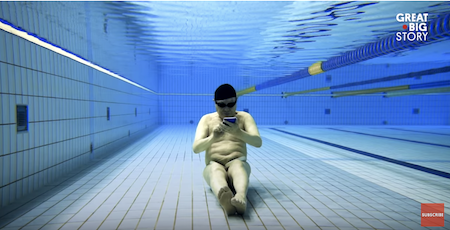
Dr. Nakamats, you will recall, was awarded the 2005 Ig Nobel Prize for nutrition, for photographing and retrospectively analyzing every meal he has consumed during a period of 34 years (and counting). He has continued the practice of photo-documenting his meals—the streak now extends to 49 years (and counting).

March 1, 2019
The Brain, Just Before the Bungee Jump
What happens inside a bungee jumper‘s brain just before the bungee jumper steps into the abyss? The answer is complicated, but one gross aspect is on exhibit in this new study:
“To jump or not to jump – The Bereitschaftspotential required to jump into 192-meter abyss,” Marius Nann, L.G. Cohen, L. Deecke, and Surjo R. Soekadar, Scientific Reports, vol. 9, no. 1, 2019. (Thanks to Tony Tweedale for bringing this to our attention.) The authors, at Charité – University Medicine Berlin, Germany, University Hospital of Tübingen, Germany. the National Institute of Neurological Disorders and Stroke (NINDS), USA, and the Medical University Vienna, Austria, report:
“Self-initiated voluntary acts, such as pressing a button, are preceded by a surface-negative electrical brain potential, the Bereitschaftspotential (BP), that can be recorded over the human scalp using electroencephalography (EEG)…. Up to now, the BP required to initiate voluntary acts has only been recorded under well-controlled laboratory conditions, and it was unknown whether possible life-threatening decision making, e.g. required to jump into a 192-meter abyss, would impact this form of brain activity. Here we document for the first time pre-movement brain activity preceding 192-meter bungee jumping.”
The action, and action potentials, happened at the Europa Bridge in Innsbruck, Austria.

February 28, 2019
Smart Arse: Posture Classification with Textile Sensors in Trousers
“We talk ‘through’ our clothes, if we want [sic] or not.”
– say a research team from Queen Mary University of London, who have recently created ‘Smart Arse’ – a pair of ‘sensing trousers’ (that’s ‘sensing pants’ US) – which can reveal details of the ‘conversational engagement’ of the wearers.
“People continually adjust their posture and re-arrange their hands and legs when seated. For example: hands resting on laps; elbows on thighs; a forward leaning posture; hands that are tucked between thighs; hands on knees and many other variations. Our basic question is, what can these different postural states tell us about conversational engagement and potentially even about more complex, affective states?”
In Smart Arse, an electronic textile pressure matrix around the thighs and buttocks is linked to a machine-learning model which is able to distinguish between 19 posture types, shown promising results, they say, towards an objective to make garments “socially aware”.
See: Smart Arse: Posture Classification with Textile Sensors in Trousers in ICMI ’18 Proceedings of the 20th ACM International Conference on Multimodal Interaction, Pages 116-124

February 27, 2019
Recursive nudging
The journal Comprehensive Results in Social Psychology is nudging its readers to submit articles for a special issue on nudging. In reading the previous sentence, you were being nudged to look into that nudge about nudging.
In reading the sentence you are reading now, you are being nudged to learn (or remind yourself of) the meaning of the word “recursion.”

Marc Abrahams's Blog
- Marc Abrahams's profile
- 14 followers




